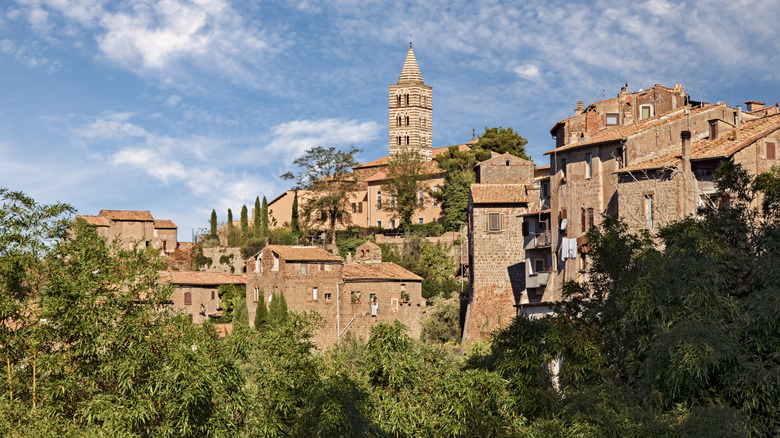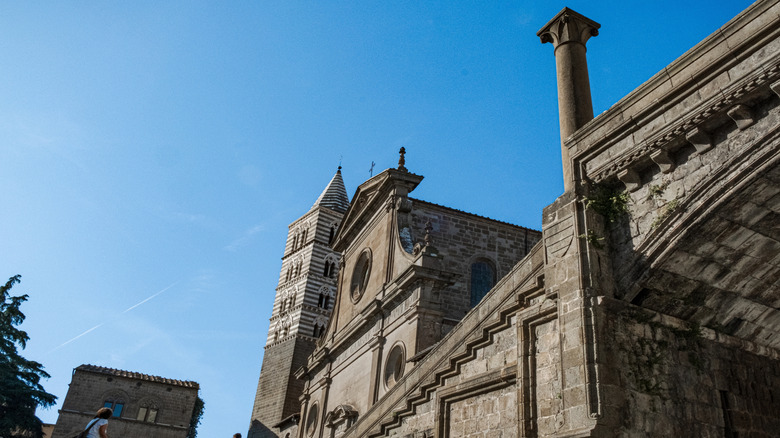Situated Between Rome And Florence Is A Secret Laidback Italian City Of Art And Medieval Charm
You're sipping your morning caffè in the capital city of Italy, wondering how this vacation could possibly get any better. Then it hits you — Viterbo is just an hour and a half away. Known as one of the best and easiest day trips from Rome, this place promises much more than you'd expect. The sight of Fontana Grande sets the medieval tone of your adventure. And then, the towering Macchina di Santa Rosa will have you rethinking your plans and extending your stay.
The Middle Ages come alive in Viterbo, with its walls, towers, castles, and cobbled streets turning the city into an open-air museum. Once a renowned papal residence, Viterbo earned the nickname "City of the Popes" in the 13th century. Religion held tremendous power here, so much so that it was the site of the world's longest papal conclave. Beyond its religious history, Viterbo was also a hub for artisans and merchants. The ornate fountains, grand piazzas, and ancient buildings will transport you back in time and leave you in awe.
Since Viterbo is so close to Rome, it's the best destination to go by train. The journey takes anywhere from 1 hour, 45 minutes to 2 hours, 20 minutes. Coming from Florence, the train ride is considerably longer, taking up to 4-hours long. But if you've already made the crucial mistake of renting a car in Italy for your first visit, you might as well take advantage of it and drive there.
Viterbo's historic landmarks speak of its ingenuity
Viterbo Cathedral will grab your attention with its simplicity. Perched on a hill, the Romanesque masterpiece contrasts with its understated facade, especially compared to the more intricate buildings in the city. The interior is modest, too — only a few pieces remain, like the "Madonna with Child" and 17th-century "Sacred Family and St. Bernardine" by Giovanni Francesco Romanelli. You might be thinking, if this cathedral is so plain, why is it worth visiting? For starters, it served as the residence for several popes during the papal sede vacante. Despite its modesty, this place of worship is remarkable in the history of the papacy.
Next to the cathedral is Palazzo dei Papi, another must-see attraction in Viterbo. Its grand facade towers over the surrounding Piazza San Lorenzo, with a wide staircase leading up to the entrance. At the very top, the square merlons crown the walls — a hallmark of medieval design. The roofless loggia on the east hides a beautiful enigma — a 15th-century fountain that proudly displays the Gatti family's coat of arms.
Viterbo's medieval charm runs as deep as its underground tunnels. Beneath the city's historic center lies a fascinating grid of passages carved into volcanic tuff by Etruscans — it was originally designed as a water management system. But it was during the medieval era when the tunnels became essential pathways that provided escape routes at times of siege. Touring the maze under Piazza della Morte exposes you to Viterbo's ancient survival tactics.
Viterbo's art scene spans centuries of creativity
With medieval architecture comes impeccable taste in art, and the Museo del Colle del Duomo is a good introduction. Begin your museum tour at the sacred art exhibits, where you'll view religious objects like bishops' vestments, chalices, and reliquaries on display. But it's the bust of Sixtus II that'll pique your interest with its gold iridescence and kaleidoscopic gemstones. Benvenuto di Giovanni's "Madonna with Child" is also a can't miss. The archaeological section boasts relics from the Villanovan and medieval eras — what makes these items so special is that many of them were discovered on the premises.
Meanwhile, the historical art collection features works from the parishes of the Viterbo diocese — they range from the late 12th to the 20th century. Most of the works here were created by artists originally hailing from Viterbo, though many worked in different regions of the continent.
For an off-the-beaten-path artistic experience, head to the House-Museum of Roberto Joppolo. With over 500 pieces of art, the museum offers a window into Joppolo's wide-ranging creativity. From colorful paintings to intricate sculptures, his creations feature materials like bronze, copper, and marble. There's even more art in the garden — striking bronze structures interact with nature. While it may not be considered one of Italy's best art museums based on reviews — mainly because it's a hidden gem — it's definitely worth the visit. You might even get a chance to check out Joppolo's studio and see what project he's currently working on.

